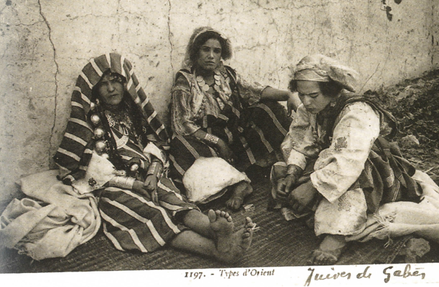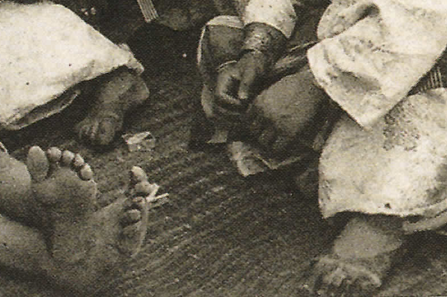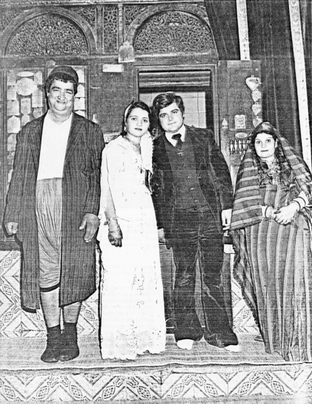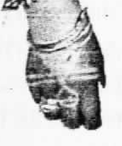If you are interested in having a traditional Jewish henna ceremony, for a marriage or for any other happy occasion, or interested in having me speak to a group about Jewish henna traditions, please contact me!
See here for an overview of Jewish henna traditions in general, and Jewish henna in Israel today.
This information is the result of my own research. Please do not copy this information without proper citation.
See here for an overview of Jewish henna traditions in general, and Jewish henna in Israel today.
This information is the result of my own research. Please do not copy this information without proper citation.
Jewish Henna Traditions in Tunisia
While the henna traditions of the Jews of Morocco are fairly well-established in literature, there is less known about henna traditions practiced by other Jewish communities in North Africa, in the modern countries of Algeria, Tunisia, and Libya.
Tunisia, in the Middle Ages, was a centre for the production and shipping of henna by Jewish dyers and merchants, especially the cities of Tunis and Gabes; Tunisia continued to produce and export henna into the 20th century. Colonial travellers in the 19th century recorded that Tunisian Jewish women regularly dyed their hands, feet, and hair with henna, as well as using it in the marriage preparations, as was customary in other parts of North Africa.

Jewish women in Gabes, early 20th century
The Jews of Tunisia practiced a unique patterning technique that used strings wrapped around the fingers and hand (or toes and feet) to create a striking resist pattern. Colonial-era photographs demonstrate that this was done both among the Jews of Djerba (an island off of south Tunisia, whose Jewish community was somewhat isolated) and the Jews of the mainland; in Djerba this practice continued even into contemporary times among the Jews who remained in Djerba (but in Israel it has not been maintained).
|
In Tunisia the bride was hennaed several times (sometimes as many as five times in one week!) but the most significant occasions were the “little henna”, where the bride’s mother-in-law ties strings around the bride’s fingers and then hennas over them in a private family ritual, and the “great henna”, where once again the groom’s mother grinds henna in a public celebration and applies henna to the bride again.
The next day the bride's henna was gone over several times by an experienced woman. The strings underneath the henna created a kind of resist pattern, visible as skin-coloured lines on henna-coloured background. The patterns for brides were more elaborate than the simple patterns done ordinarily. The bride would sleep with the henna overnight. In the morning, the women come to the bride’s house to check if the henna came out nicely; if it is good, they kiss her fingers and praise her beauty, and if the colour is not strong enough, then they henna her again. One author describes that a Jewish girl in mid-20th century Tunisia was hennaed on the occasion of her first menses “to bless her path into womanhood”; it is unclear, however, whether this was a common practice. |
Sources and References
Awret, Irene. 1984 Days of Honey: The Tunisian Boyhood of Rafael Uzan.
Ben-Hur (Haddad), Ephraim. 1964 Minhagei ḥatuna beJerba [Wedding customs in Djerba]. Yeda-‘Am, Vol. X, No. 28.
Hidiroglou, Patricia. 2003 Coutume et mémoire en héritage: réinterprétations du henné et de la bèlgha [Custom and memory in heritage: reinterpretations of the henna and belgha]. In Entre héritage et devenir: La construction de la famille juive [Between Heritage and Future: The Construction of the Jewish Family].
Melena, Elpis [Marie Espérance von Schwartz]. 1850 Leaves from a Lady’s Diary of her Travels in Barbary.
Noah, Mordechai. 1819 Travels in England, France, Spain, and the Barbary States, in the Years 1813-1814 and 15.
Schely-Newman, Esther. 2002 Our Lives are But Stories: Narratives of Tunisian-Israeli Women.
Valensi, Lucette. 1989 Religious Orthodoxy or Local Tradition: Marriage Celebration in Southern Tunisia (trans. Michael Bonner). In Jews among Arabs: Contacts and Boundaries.
Vivian, Herbert. 1899 Tunisia and the modern Barbary pirates.
Ben-Hur (Haddad), Ephraim. 1964 Minhagei ḥatuna beJerba [Wedding customs in Djerba]. Yeda-‘Am, Vol. X, No. 28.
Hidiroglou, Patricia. 2003 Coutume et mémoire en héritage: réinterprétations du henné et de la bèlgha [Custom and memory in heritage: reinterpretations of the henna and belgha]. In Entre héritage et devenir: La construction de la famille juive [Between Heritage and Future: The Construction of the Jewish Family].
Melena, Elpis [Marie Espérance von Schwartz]. 1850 Leaves from a Lady’s Diary of her Travels in Barbary.
Noah, Mordechai. 1819 Travels in England, France, Spain, and the Barbary States, in the Years 1813-1814 and 15.
Schely-Newman, Esther. 2002 Our Lives are But Stories: Narratives of Tunisian-Israeli Women.
Valensi, Lucette. 1989 Religious Orthodoxy or Local Tradition: Marriage Celebration in Southern Tunisia (trans. Michael Bonner). In Jews among Arabs: Contacts and Boundaries.
Vivian, Herbert. 1899 Tunisia and the modern Barbary pirates.
Pictures from:
Sylvain, Gerard. 1980 Images et traditions juives: un millier de cartes postales (1897-1917) pour servir à l'histoire de la diaspora [Jewish images and traditions: a thousand postcards (1897-1917) to serve for the history of the diaspora].
The Oster Visual Documentation Center of Beit haTfutsot: The Museum of the Jewish People, www.bh.org.il.
The Oster Visual Documentation Center of Beit haTfutsot: The Museum of the Jewish People, www.bh.org.il.


